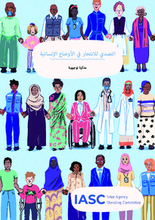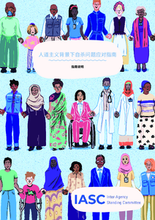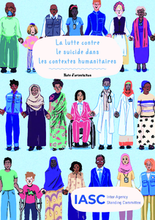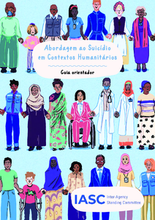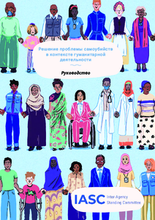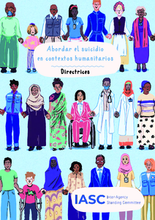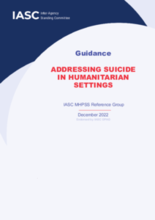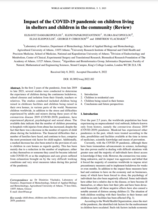Displaying 581 - 590 of 4401
تهدف هذه المذكرة التوجيهية إلى دعم منفذي البرنامج والمنسقين والجهات الفاعلة الإنسانية الأخرى في معالجة الانتحار وإيذاء النفس في الأوضاع الإنسانية. إنه يجمع مجموعة واسعة من الأساليب والأدوات والمواد المرجعية وأمثلة الحالة.
本指导说明旨在支持项目实施者、协调员和其他人道主义行为者解决人道主义环境中的自杀和自残问题。 它汇集了范围广泛的方法、工具、参考资料和案例示例。 它是一种实用而简洁的资源,适用于所有类型的紧急情况、组织和部门。
Cette note d'orientation vise à aider les responsables de la mise en œuvre des programmes, les coordinateurs et les autres acteurs humanitaires à lutter contre le suicide et l'automutilation dans les contextes humanitaires.
Esta nota de orientação visa apoiar os implementadores de programas, coordenadores e outros atores humanitários na abordagem do suicídio e da automutilação em contextos humanitários.
Это руководство направлено на оказание поддержки исполнителям программ, координаторам и другим гуманитарным организациям в борьбе с самоубийствами и членовредительством в гуманитарных условиях.
Esta nota de orientación tiene como objetivo ayudar a los implementadores de programas, coordinadores y otros actores humanitarios a abordar el suicidio y las autolesiones en entornos humanitarios. Reúne una amplia gama de enfoques, herramientas, materiales de referencia y ejemplos de casos. Es un recurso práctico y conciso aplicable a todo tipo de emergencias, organizaciones y sectores.
This guidance note aims to support programme implementers, coordinators, and other humanitarian actors in addressing suicide and self-harm in humanitarian settings.
This Family for Every Child webinar focuses on the use of creative therapies in supporting the mental health of vulnerable children and youth.
In this U.S.-based study, over 200 pre-adolescent children recently placed into out-of-home care were asked about the difficulty and helpfulness of placement and how their lives might be different had they not been removed. The same participants were interviewed 10 years later.
This article in the World Academy of Science Journal reviews some of the latest global studies on the impact of the COVID-19 pandemic on children in residential care and children living with their families.

